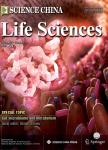Physiological characteristics of the primitive CO_(2) concentrating mechanism in PEPC transgenic rice
Physiological characteristics of the primitive CO_2 concentrating mechanism in PEPC transgenic rice作者机构:Institute of Agrobiological Geneticsand Physiology Jiangsu Academyof Agriculturalsciences Institute of Botany Chinese Academy of Sciences
出 版 物:《Science China(Life Sciences)》 (中国科学(生命科学英文版))
年 卷 期:2003年第46卷第4期
页 面:438-446页
基 金:supported by the State Key Basic Research and Development Plan(G1998010100)in China
主 题:PEPC transgenic rice, phosphoenopyruvate carboxylase (PEPC), carbonic anhydrase (CA), stomatal conductance, CO2 concentrating mechanism.
摘 要:The relationship between carbon assimilation and high-level expression of the maize PEPC in PEPC transgenic rice was studied by comparison to that in the untransformed rice, japonica kitaake. Stomatal conductance and photosynthetic rates in PEPC transgenic rice were higher than those of untransformed rice, but the increase of stomatal conductance had no statistical correlation with that of photosynthetic rate. Under high levels of light intensity, the protein contents of PEPC and CA were increased significantly. Therefore the photosynthetic capacity was increased greatly (50%) with atmospheric CO2 supply. While CO2 release in leaf was reduced and the compensation point was lowered correspondingly under CO2 free conditions. Treatment of the rice with the PEPC-specific inhibitor DCDP showed that overexpression of PEPC and enhancement of carbon assimilation were related to the stability of Fv/Fm. Labeling with 14CO2 for 20 s showed more 14C was distributed to C4 primary photosynthate asperate in PEPC transgenic rice, suggesting that there exists a limiting C4 photosynthetic mechanism in leaves. These results suggest that the primitive CO2 concentrating mechanism found in rice could be reproduced through metabolic engineering, and shed light on the physiological basis for transgenic breeding with high photosynthetic efficiency.



